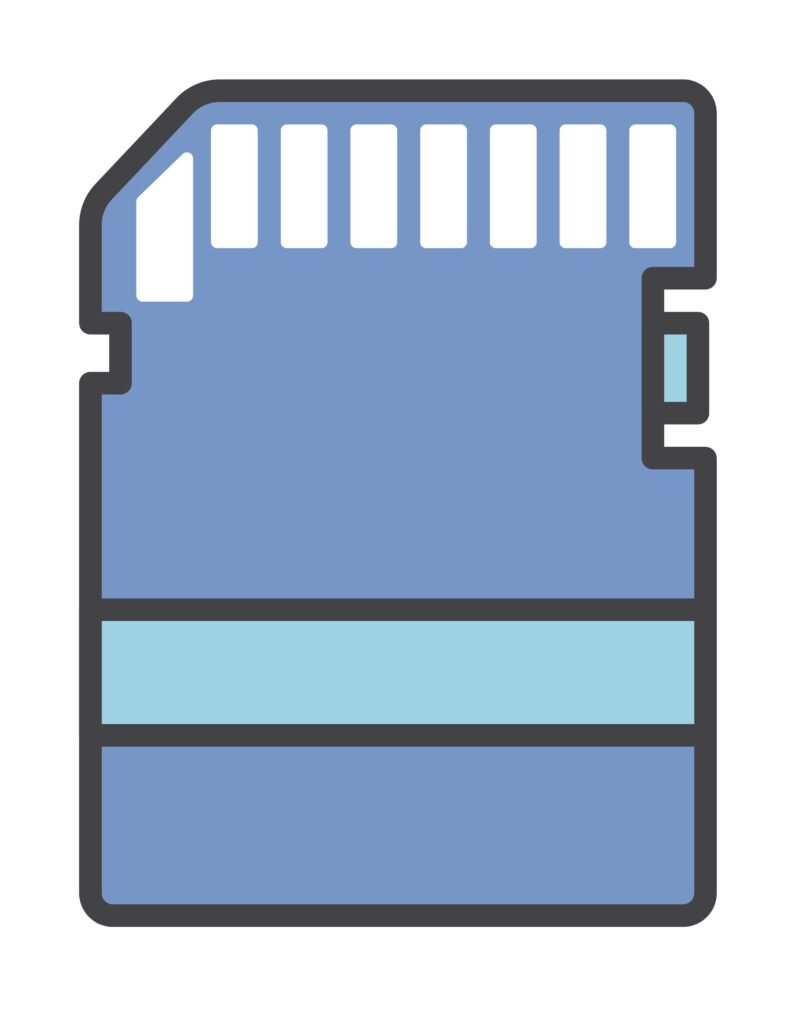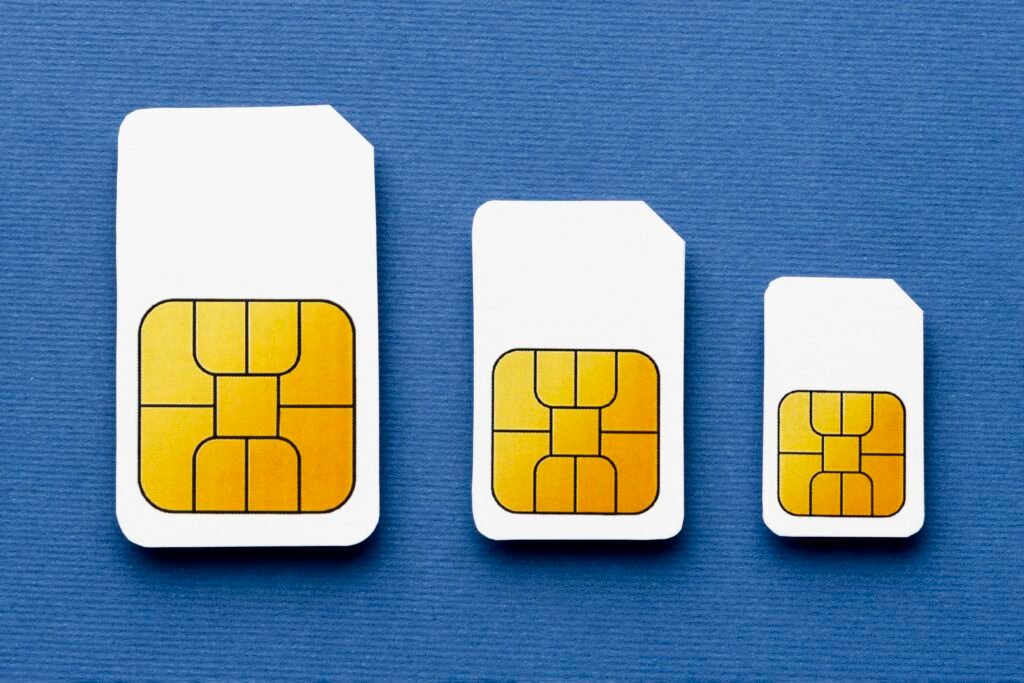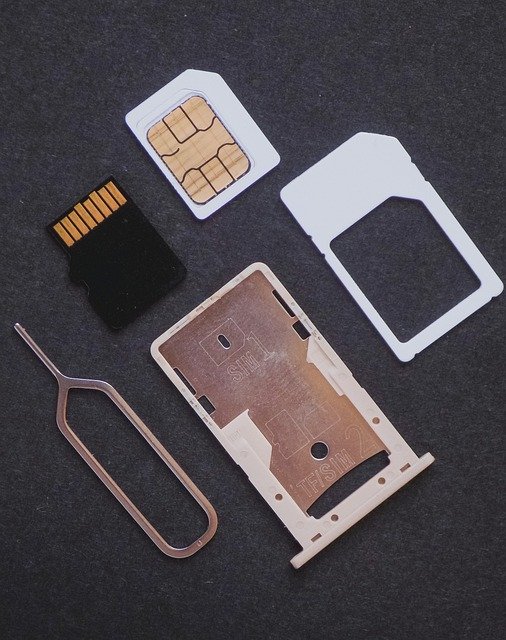SIM (Subscriber Identification Module) cards very often unless you’re buying a new phone and need to transfer the card from your old device to your new one, along with the information stored in the phone.
cards are simple pieces of plastic with silicon chips, similar to those found in credit cards and hotel key cards, that contain a processor and memory circuitry for storing up to 256 KB of digital information.
SIM cards play a crucial role in telecommunications and mobile technology: they connect a physical device to the owner’s account, allow calls to be routed to the appropriate devices, and allow telephone companies to accurately meter usage and provide subscribers with their services in the invoice.

What is a SIM card?
A SIM (Subscriber Identity Module) card is a plastic piece with a chip embedded in the circuitry that stores identifying information about a mobile device. This information helps wireless service providers associate devices with individual customer accounts.
How do SIM cards work?
Each SIM card contains the user’s IMSI (International Mobile Subscriber Identity) and ICCID (Integrated Circuit Card Identifier) information. Mobile network operators use the SIM card’s IMSI and ICCID to verify the incumbent operator and decide whether or not to allow the associated device network access. In addition to greatly facilitating the transfer of data between devices, SIM cards are an important personal identifier of the phone, its telephony service, and associated user activities, serving as an identifier for the user of the service and the connected device. But what exactly does a SIM card do?
Each SIM card contains unique information called IMSI (International Mobile Subscriber Identity) and ICCID (Integrated Circuit Card Identifier) that are used for identification purposes.
The IMSI is stored as a 64-bit number in the chip and is used to verify and ensure the security of the phone user. When a device is first connected to the telephone network, the IMSI and authentication key are sent to the service provider to verify that the connected device belongs to the buyer. If both access data match the provider’s, the device is authorized to access the telephone service network. If you don’t pay your phone bill, your IMSI will let your provider know which user and associated device to block on their network.
Like the ICCID, this information is an 18-22 digit code, usually embedded on the back of each SIM card, which serves as an identifier that cannot be duplicated for the card itself. ICCID numbers are usually numbers that classify the specific SIM industry, country, service provider network, and unique identifier. After purchasing and activating a SIM card, the ICCID tells mobile network operators which network to connect the card and associated device to. For example, if you live in the United States and Verizon is a registered service provider, your ICCID reflects this information.
Types of SIM cards Mobile
Technology has evolved rapidly since the introduction of the SIM card in 1991, requiring various hardware changes to the card and resulting in five main types of SIM cards.
SIM CARD TYPES
- Full size
- Minifigures
- Microphone
- Dwarf
- Integrated (eSIM)
full-size SIM card
Released: around1991
The Full Size, Standard or 1FF SIM card is the original and largest card type. Full-size SIM cards, which are roughly the size of a credit card, are found in older cell phone models from the early to mid-1990s.
MINI SIM CARD
Released: around1996
The mini-SIM or 2FF SIM significantly reduced the size of the cards from about three inches in length to one. Mini SIM cards were used in phones such as the iPhone 3GS and are commonly found in other models from the late 1990s to the early 2000s.
MICRO SIM CARD
Released: around2003
The Micro SIM or 3FF SIM is even closer in size to the latest iteration, measuring just about half an inch in length and width. These sim cards and micro cards are especially found in phones 4 and in some of the other models of phones that are released in the mid-2010s or in early mid-2010.
NANO SIM CARD
Released: around 2012
Widespread in mobile phones today, the Nano SIM or 4FF SIM is the smallest physical card type and is compatible with most modern iOS and Android devices. Nano SIM cards are used in phone models like iPhone 5 to iPhone 13.
INTEGRATED SIM CARD
Released: 2016
Embedded SIM or eSIM is the first type of all digital card and also the latest type to be used.eSIM cards are fully software-based and integrated into the mobile device, allowing users to activate their service plan without a physical card. Phone models like iPhone 14, iPhone XS, and later use eSIM technology.
When using an iPhone, Apple informs that you can install more than eight eSIM cards and use two phone numbers at the same time.

Does the phone need a SIM card?
You may have heard the terms GSM and CDMA when talking about your smartphone. CDMA phones do not, GSM phones use SIM cards.
If you’re on a CDMA network like Virgin Mobile or Sprint, your phone may have a SIM card or SIM card slot. This is probably because the LTE standard prescribes it or because the SIM slot can be used with other GSM networks. In these situations, however, no identifiers are stored on the SIM card. So if you have a new Verizon phone you want to use, you can’t put your current SIM in and expect it to work. To do this, you must activate the device through your Verizon account.
The SIM card of GSM phones can be replaced with other GSM phones. The phone then works in the GSM network to which the SIM card is assigned, e.g. B. T-Mobile or AT&T.This means that you can remove the SIM card from one phone and insert it into another and still use the phone data, phone number, and other services without asking the operator’s permission, e.g. B. when using Verizon, Virgin Mobile or Sprints.
Originally, mobile phones don’t use the GSM network and did not use a removable SIM card instead mobile phones used the CDMA network. Instead, the device contained identification numbers and other information. This meant that CDMA devices could not be easily switched between carrier networks and could not be used in many countries outside the United States.
Recently, CDMA phones have been equipped with a removable user identity module (R-UIM). These SIM cards work in most GSM devices and they almost look like SIM cards.
SIM cards look like
The SIM card looks like a small piece of plastic.
The important part is a small embedded chip that is read by the mobile device it is inserted into. The chip which is in the SIM card contains a unique telephone number, identification number, and other user-specific data.
The first SIM cards were about the size of a credit card and had the same shape. Mini and Micro SIM cards now have a beveled corner to prevent them from being inserted into a phone or tablet the wrong way around.
There are the dimensions of the different types of SIM cards nano, micro, and mini cards.
An iPhone 5 or later, a phone uses a nano SIM card. The iPhone 4 and 4S use a larger micro SIM card.
Samsung Galaxy S4 and S5 phones use Micro SIM cards, while Nano SIM is essential for Samsung Galaxy S6 and S7 devices.
Despite the size differences, all SIM cards contain the same types of identification numbers and chip information. Different maps contain different amounts of storage space, but this has nothing to do with the physical size of the map. A micro card can be made if a mini sim card undergoes this process to get converted into a micro card as long as the plastic surrounding the card is physically cut or removed.
How to insert and remove a SIM card?
The SIM card replacement process varies by device. It can be stowed behind the battery, which is only accessible via the back panel. However, some SIM cards are available on the mobile device side.
You can pry the
SIM card for your particular phone out of the slot with a sharp object like a paper clip, but others may be easier to remove if you pry it out with your finger

THE ADVANTAGE:
EASIER USE OF THE PHONE ON THE MOVE
An ID card separate from the mobile device has its advantages, for example when the phone user is traveling abroad. Instead of paying high international rates through a national carrier or buying a brand-new phone, the traveler can purchase another SIM card from the carrier operating in the destination area for a small fee. All data and applications on the physical device would still be available, and when the user returns from a trip, the original SIM card can be restored.
“When we were traveling, all my family members bought different SIM cards,” said Paige Hanson, Cybersecurity Training Manager at Norton LifeLock. “Rather than paying extra for an international plan, it was so easy to swap out – it works great in your country and has a certain amount of data to use. It was almost seen as convenient or paying less.”
While it can be handy to change SIM cards when traveling abroad, it’s always possible to lose the removed card. SIM cards also bind customers to their service providers, as switching providers usually involves getting a new physical SIM card – it’s not particularly difficult, but it can be daunting for users due to the inconvenience.
ADVANTAGE: QUICK REPLACEMENT OF NEW DEVICES
In no time at all, the user’s SIM card can be easily removed from the damaged phone and inserted into another device. If the user’s phone suddenly goes black and needs to answer an important call, the SIM card can be swapped with a friend’s phone and continue to receive calls and messages.
DISADVANTAGES: THE PHONE BILL INCREASES DURING THE TRIP
But some say it’s time to ditch SIM cards: as an outdated technology, they can actually hinder progress and skyrocket phone bills, especially when traveling. If you choose to keep your original SIM card when traveling abroad, your international roaming and data charges can be quickly tracked and totaled, resulting in inflated phone bills when you return. Tariffs also vary depending on the country you are visiting and may surprise users if an international service plan is not set up in advance.
Disadvantage
one of the biggest risks with SIM cards is SIM swapping which is a cyber attack. The attackers convince the service provider that the attacker is one of their existing customers and then request that the victim’s existing account be transferred to a new SIM card purchased by the attacker.
Because providers have no way other than SIM cards to detect whether a physical device belongs to the account holder, this attack transfers the victim’s account to the attacker’s new SIM card, which the attacker can then use on any phone.
Hanson said SIM swapping has become even riskier in recent years as more and more account transactions have been done virtually.
“Every company has a call center that asks a series of authentication questions to verify who they believe their wireless customer is,” Hanson said.”As long as you answer these questions correctly, you can act like a real customer.”
Attackers have multiple avenues to obtain the information they need to successfully bypass authentication challenges. They may target customers whose personal information has been compromised in previous breaches or customers who have self-published information online.
When a customer falls victim to a successful SIM swapping attack, their phone stops working properly. The customer cannot make outgoing calls or receive incoming calls and messages.
So
attackers have a limited amount of time to use the account before the customer realizes there is a problem, but that doesn’t mean attackers can’t cause significant damage. Phone calls and text messages are used in many services and websites to authenticate users. Attackers who access a customer account via a new SIM card can bypass these barriers and many two-factor authentication methods.
The future of SIM cards
It seems that SIM cards will be part of mobile communications for the foreseeable future, and even more often customers can have accounts with multiple providers at the same time. Apple devices offer customers the option to juggle two carriers on the go or connect a primary carrier with eSIM and multiple SIM cards. or eSIM could become the dominant SIM card type. Although they are just as vulnerable to SIM swapping attacks as regular SIM cards, users don’t have to worry about losing their card and having to reconfigure their account with their main carrier. Ultimately, it comes down to what behavior customers expect.
“If you’re one of those people who has to pull out their SIM card because you’re traveling in two countries, this might not be the best thing for you,” Hanson said. “But for me, for example, an eSIM would probably be more suitable for what I want because I couldn’t physically remove it.
